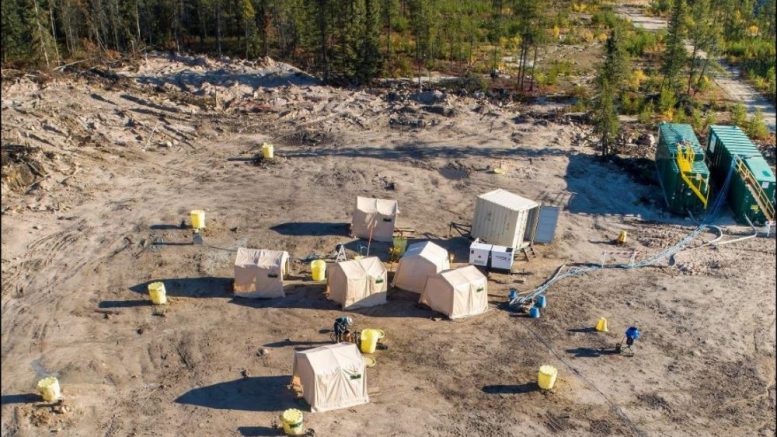Denison Mines (TSX: DML) has released results of a feasibility study completed for in-situ recovery (ISR) mining of the high-grade Phoenix uranium deposit, part of its 95% owned Wheeler River project located in the Athabasca Basin of northern Saskatchewan.
On a 100% ownership basis, the Phoenix deposit is presented with a base case after-tax net present value (at an 8% discount) of $1.6 billion and an internal rate of return of 90%. The payback period is 10 months.
Preproduction capital costs are estimated at just under $420 million (again on a 100% basis), yielding an after-tax NPV to initial capital cost ratio in excess of 3.7 to 1.
The feasibility is a culmination of a multi-year technical de-risking process, highlighted by the successful completion of the leaching and neutralization phases of field testing in late 2022. Through the this process, Denison has acquired extensive deposit-specific data and developed an ISR mine planning model to optimize production.
As a result, the planned rate of production over the first five years of operation is now about 43% higher, at 8.4 million lb. of U3O8 a year. The study forecasts 56.7 million lb. of U3O8 will be recovered from Phoenix over its 10-year life span.
“After 4.5 years of rigorous technical de-risking and independent third-party validation, Phoenix has cemented its position as one of the lowest-cost uranium development projects in the world,” commented David Cates, Denison’s CEO.
“Notably, despite the considerable capital cost pressures experienced by the global mining industry over the last two years, the economics of a Phoenix ISR mining operation remain exceptionally robust – producing an improvement in projections of NPV and IRR, when compared to the 2018 prefeasibility, as a result of favourable design changes and optimizations,” he added.
With the feasibility study complete, the Denison team is now advancing front-end engineering and design efforts, with a target of transitioning into detailed design before the end of the year.
Gryphon cost update
In addition, Denison has put out a cost update to the 2018 prefeasibility study for conventional underground mining of the basement-hosted Gryphon uranium deposit, also part of the Wheeler River project.
The 2018 prefeasibility and the Gryphon update describe the planned development of Gryphon as a conventional underground mine with a mine life of 6.5 years and annual average mine production of 7.6 million lb. U3O8. The initial capital cost was estimated at $737.4 million.
The update was meant to review and update capital and operating costs – mining and processing plans remaining largely unchanged from the 2018 study, aside from minor scheduling and construction sequencing optimizations.
On a 100% basis, development of the deposit has a base case after-tax NPV (at 8% discount) of $864.2 million and IRR of 37.6%. This gives the project a payback period of 22 months.
According to Denison, the cost update demonstrates that the underground development of Gryphon is a positive potential future use of cash flows generated from Phoenix, as it is able to leverage existing infrastructure to provide an additional source of low-cost production.
In a note to clients, Canaccord Genuity mining analyst Katie Lachapelle said the combined projects show strong economics that are able to absorb higher capital and operating costs outline in the reports.
“At first glance, the headline NPV of both projects has increased materially, with Phoenix up 150% and Gryphon up 148%. However, this improvement is largely driven by higher uranium price assumptions,” wrote Lachapelle, who counts Denison among her top picks for uranium exposure. “Whereas, when you look at an “apples-to-apples” comparison of the results (at US$65/ lb. U3O8 flat lined), the NPV of the projects are relatively unchanged vs. the 2018 PFS, with Phoenix up 5% and Gryphon down 5%. This is despite a material increase in both capital and operating costs at Phoenix, with inflationary pressures more than offset by an optimized production profile.”


Be the first to comment on "Denison boosts economics for Phoenix, updates Gryphon costs"